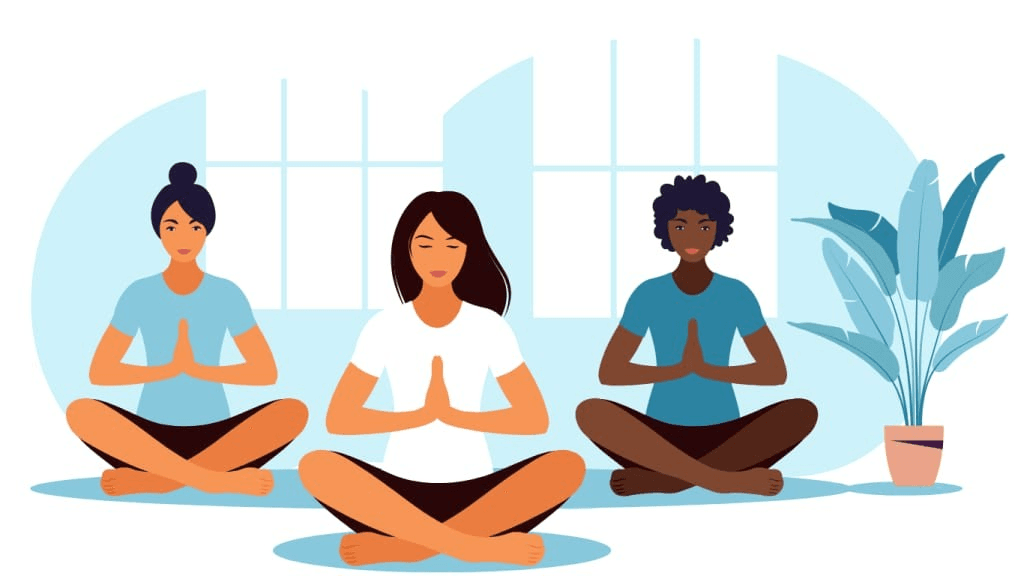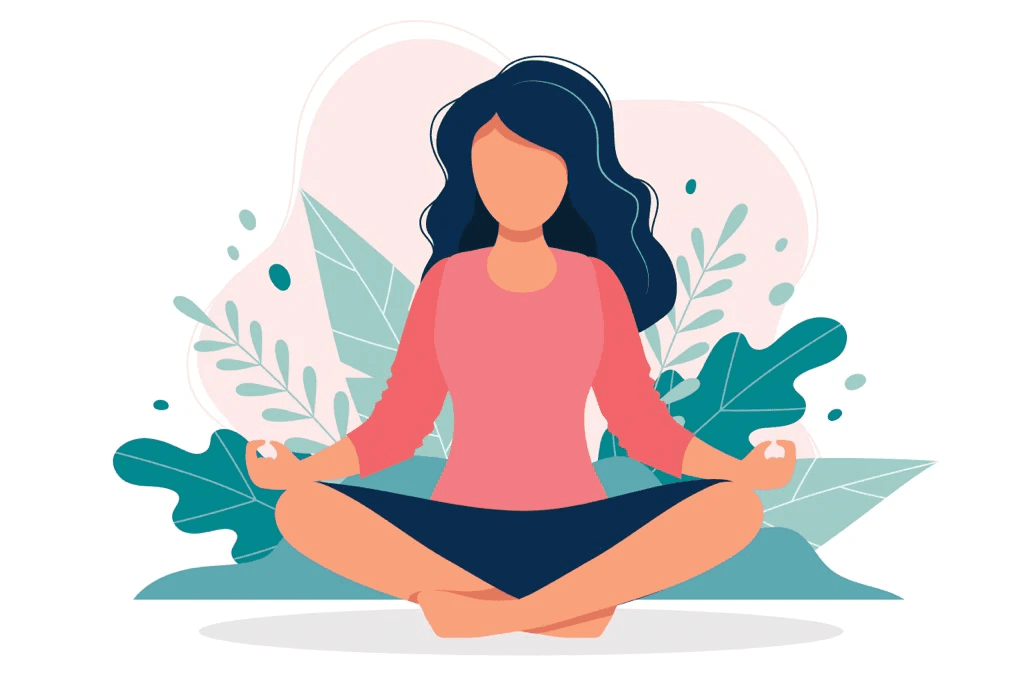In today’s fast-paced world, mindfulness and meditation offer a peaceful break from the noise. If you’re new to these tactics, you might be wondering where to start. This course will teach you the principles of mindfulness and meditation in a straightforward and clear manner. By investigating these practices, you’ll discover how to build inner calm and improve your general well-being. Embrace this journey to achieve peace and clarity in your daily routine.
What is Mindfulness?

Assume you’re eating your favorite chocolate chip cookie. Mindfulness entails truly focusing on the cookie, including its scent, taste, and texture. Instead of mechanically eating, you taste each bite and enjoy the moment. That is mindfulness: giving whole attention to the current moment.
Why is Mindfulness Important?
Mindfulness helps to alleviate stress and anxiety. It’s like having a mental vacation, where you may unwind and cleanse your thoughts. Being present in the moment allows you to better manage life’s problems and improve your overall well-being.
What is Meditation?

Meditation is a practice where you train your mind to focus and relax. It’s like exercising your brain to become stronger and more peaceful. During meditation, you sit quietly and concentrate on your breathing, a mantra, or a visual object. This practice helps calm your mind and body.
Why is meditation important?
Meditation has numerous benefits. It can help you feel less stressed, more focused, and even happy. Meditation strengthens your mind in the same way that exercise does your muscles.
Getting Started with Mindfulness
Start Small: Begin with just a few minutes every day. Even just five minutes can make a difference. Find a peaceful area where you will not be disturbed.
Sit comfortable and focus on your breathing: Consider how the air feels as it enters and exits your body. If your mind wanders, softly return your focus to your breathing.
Use Mindfulness in Daily Activities: You don’t need to set aside time just for mindfulness. Practice it while eating, walking, or even doing the dishes. Simply concentrate on what you are doing in the present moment.
Be patient: It’s common for your thoughts to stray. Don’t be harsh on yourself. Mindfulness will gradually become simpler and more natural.
Getting Started with Meditation
Find a Quiet Place : elect a peaceful and quiet location where you may sit comfortably without disturbance. It could be a chair, a cushion, or simply the floor.
Choose a comfortable position : Sit in a relaxed stance. You can sit cross-legged on the floor or in a chair, feet flat on the ground. Keep your back straight, but not stiff.
Focus on Your Breath : Close your eyes and take a deep breath. Pay attention to the way your chest rises and falls with each breath. If your mind wanders, gently bring it back to your breath.
Use guided meditations : If you are new to meditation, guided meditations might be beneficial. They offer step-by-step directions, making meditation easy to follow.
Practice regularly : Try meditating at the same time every day. Consistency promotes habit formation and increases the effectiveness of meditation.
Tips for Success
Start slowly : Do not rush. Begin with brief sessions and progressively increase the duration as you become more comfortable.
Be kind to yourself : It is fine if you don’t get it right every time. Meditation and mindfulness are skills that can be improved with practice.
Use Apps and Resources : Many applications and internet sites include guided meditations and mindfulness exercises. They can be a valuable resource as you get started.
Discover What Works for You : Different strategies suit different people. Investigate multiple approaches to see what works best for your.
Make It a Habit : by incorporating mindfulness and meditation into your everyday routine. The more you practice, the easier it gets.
Conclusion
Mindfulness and meditation may appear intimidating at first, but with a little practice, they can become a natural part of your everyday routine. By focusing on the present moment and teaching your mind to relax, you may minimize stress, increase your well-being, and enjoy life more fully. Begin with basic steps, be patient with yourself, and remember that each moment of mindfulness is a step toward a more calm mind.
FAQs
How long should I meditate per day?
Begin with 5-10 minutes every day, gradually increasing as you feel more comfortable.
Do I need any specific equipment to practice mindfulness or meditation?
No, all you need is a calm environment and a comfy location to sit. Some folks utilize pillows or seats for extra comfort.
Can I practice mindfulness while performing daily tasks?
Yes, mindfulness may be practiced in everyday tasks such as eating or walking by focusing on the present moment.
What if I can’t keep my thoughts from wandering during meditation?
It’s normal for your mind to wander. Gently return your focus to your breath or chosen area of concentration.
How frequently should I practice mindfulness and meditation?
What if I can’t keep my thoughts from wandering during meditation?














Pingback: Mindful Eating: Simple Steps to Enhance Your Wellness and Enjoyment 2024
Pingback: Simple Ways to Boost Joy in Daily Life : The Science of Happiness 2024